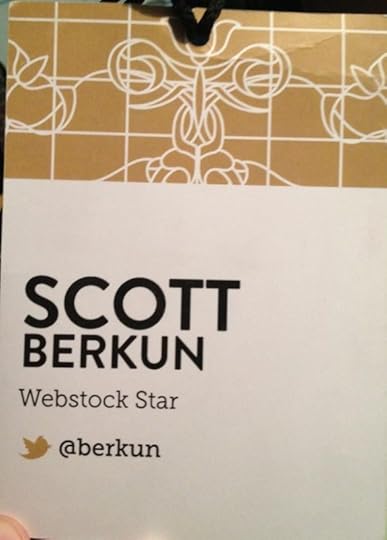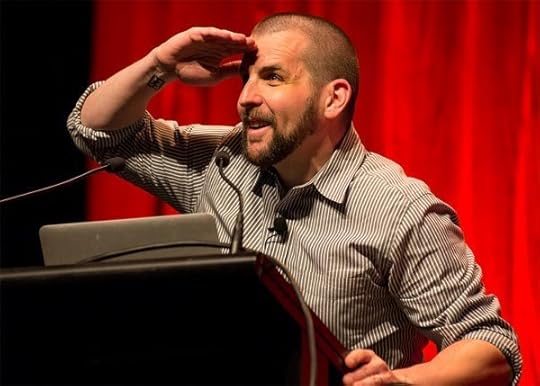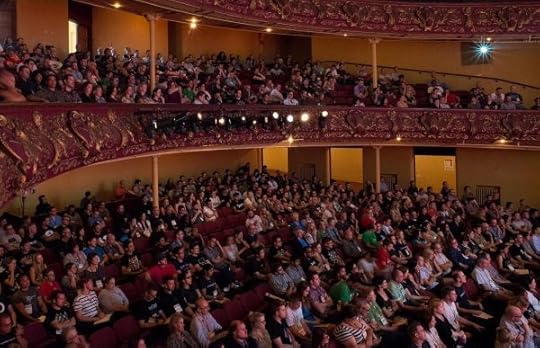Why I Loved Webstock and What Organizers Can Learn
Last week I had the pleasure of speaking for a second time at Webstock in Wellington, New Zealand. Natasha Lampard, Mike Brown and all the organizers exemplify many of the great things event organizers should strive to achieve. They run an amazing event and as someone who writes often about speaking and events that have speakers, I wrote up notes on what they did so well.
Like great design, a great event is notable in large part for what you don’t notice. It takes far more work to make things seamless and natural. They do an amazing job of event planning and organizing and I wanted to highlight some lessons other events can learn from what they’ve done.
1. Single track events force quality
By only having a single track of speakers Webstock places big bets on who they invite. Any event with multiple tracks is choosing quantity over quality, as no organizer can spend much time selecting and supporting dozens (or hundreds) of speakers. Therefore the best events are almost always single track events and afford the deepest experiences for attendees. It means the organizers are investing heavily in a singular, crafted, shared experience, making it easier for attendees to talk to strangers and make new friends. The speaker list for 2014 was excellent and I was honored to be on the roster.
2. Great venues create energy
This year Webstock was at the St. James Theater in Wellington, a grand theater with two balconies. I can tell you as a speaker I do my best work in rooms built for speaking, which is what theaters are. No matter how fancy a hotel event space pretends to be, since the rooms are designed for multiple-purposes the acoustics, the lighting, and the energy always suffers. But in a theater, especially one with as much design detail as this one, wow.
The addition of a DJ spinning tracks (and not too loud) during registration and before talks began helped set the vibe before the event even officially began.




3. Speakers Are The Stars
It’s shocking how many conferences forget that speakers are the stars. Most conferences center on a series of speakers speaking: shouldn’t choosing the speakers and helping them prepare to do a great job be the most important thing organizers do? You’d think so. But often speakers are forgotten in the logistical shuffle of running a major event. I’m not suggesting speakers should be egotistical jerks (I suggest the opposite actually), but simply that their contribution is the most central one to the attendees experience of the event and should be treated as such.
Webstock does an exemplary job of making sure speakers are well taken care of. From the invitations, to detailed emails about what to expect and how to prepare, they clearly apply design thinking to how help speakers do their best performances. Demographics on attendees and videos of past lectures are provided.
All speakers were invited out to a special evening to socialize, a great speaker perk for any event. Speakers need help to make connections and friendships and a speakers dinner is an easy way to build camaraderie that will carry forward into the event itself. The organizers took us to the amazing Boomrock, a stunning ranch on the side of a mountain, where we shot rifles, threw knives and fired arrows (not at each other of course), building our appetite for an amazing meal overlooking the ocean. They made sure we all had a great experience together doing something memorable and unique to where we were in the world.
Webstock ’14 had diverse and well curated topics. For a web/tech event 25-30% of the talks were not strictly about the usual topics of design, engineering or technology. I spoke about the future of work, Derek Silver spoke about the meaning of life, Anne Hellen Peterson talked about media and gossip. The event brought in a wide lens of stories and perspectives that because of their careful choosing, fit together brilliantly (afforded by having a single, curated track).


4. They put love and style into the details
From the first email I got from Natasha, it was clear these organizers are smart, funny, passionate and inclusive. This is a passion project for them and they want as much of their energy and excitement to rub off on everyone involved, and it works. Natasha is a fantastic and entertaining writer, even in the many typically dry procedural emails that come with event organizing, and unlike any event I’ve ever been to I smiled and felt energized every time I had contact with her. It’s a little thing in the grand scheme, but little things matter. I wanted to do a great job for them simply because of how much they seemed to care.
Little things they did right:
Great signage everywhere, well branded and on theme (note the visual references to the St. James theater)
Attendee badges are easy to read (and double sided, since they often flip over – more badge advice)
Talk lengths 30 minutes or less
High quality and healthy food
Choosing volunteers who are excited to be there and genuinely interested in helping peopple
An opening high energy 5 minute video, with a rocking soundtrack, highlighting all the speakers (each getting natural applause), the venue, the organizers and the audience (the closing text in the video said, simply, ‘we love you’). What a simple way to get the crowd’s energy up before any of the speakers take the stage. I was the opening speaker and their brief, but energetic, opening, helped me do a good job in the lead off slot.




One way to think about conferences is that they’re really a form of party, and for a party to go well requires attention not only to detail, but to the right details. Webstock gets it right in so many ways. Most events can learn much what Webstock does so well.
Other write-ups about Webstock:
Webstock 2014, Rattling the cage
Webstock 2011 was amazing
Webstock 2014 highlights (video)
Mind-spa Webstock 2014
Webstock 2014: notes from Day 1





